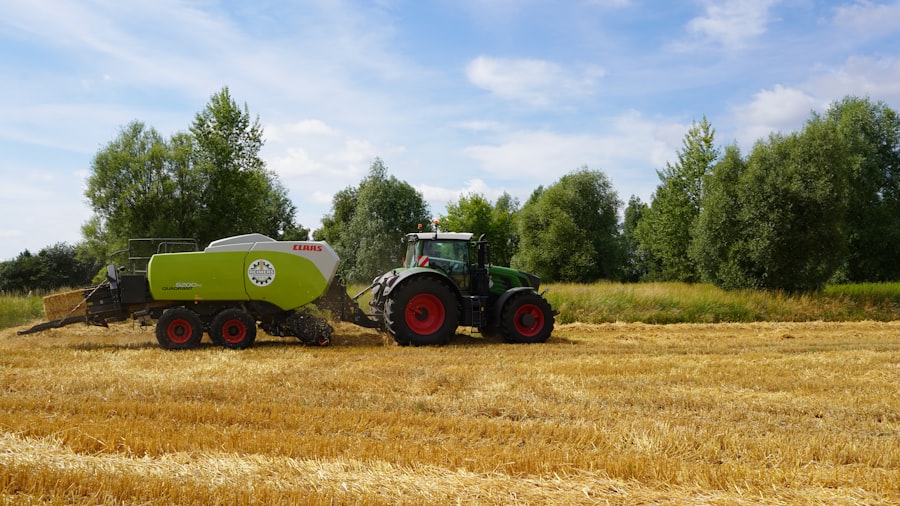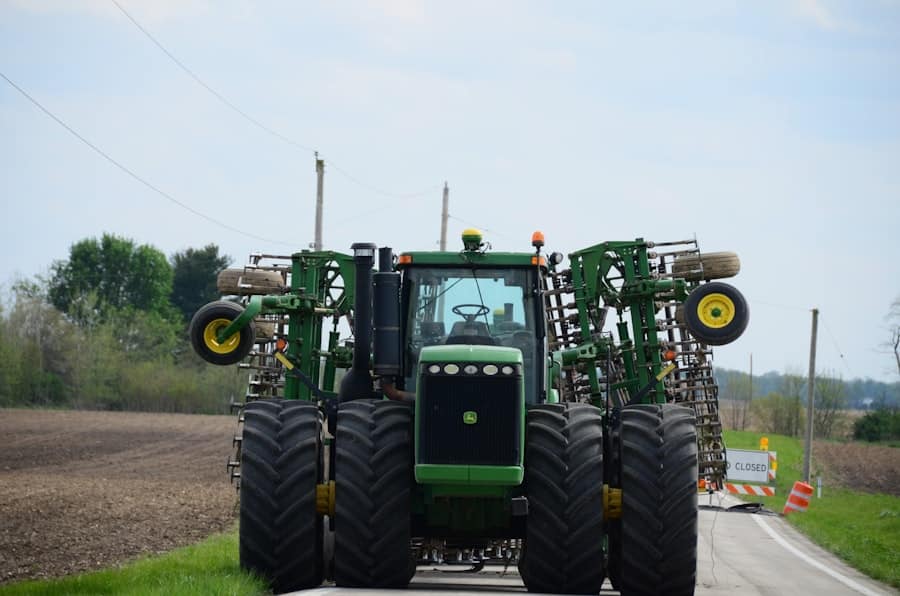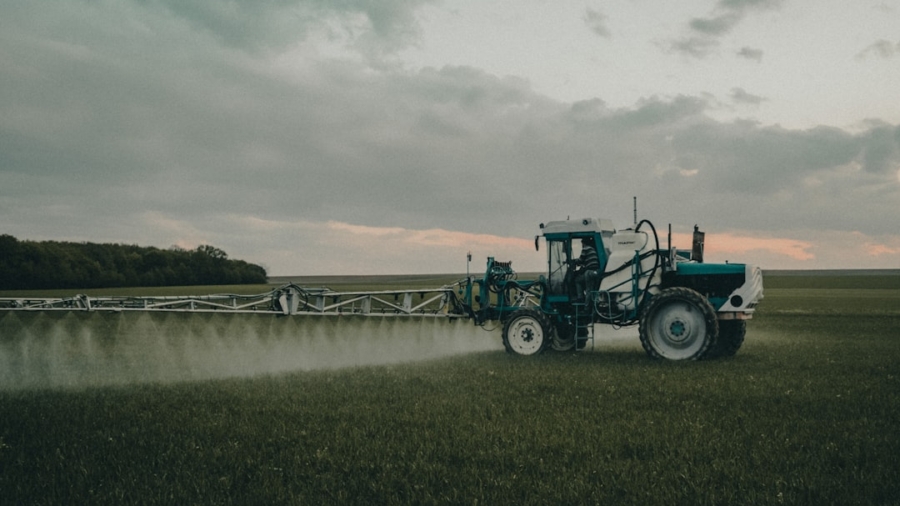The agricultural landscape is undergoing a profound transformation, driven by the advent of autonomous farming equipment. This innovative technology encompasses a range of machinery and tools designed to operate independently, utilizing advanced sensors, artificial intelligence, and machine learning algorithms. Autonomous tractors, drones, and robotic harvesters are at the forefront of this revolution, enabling farmers to optimize their operations and enhance productivity.
As the global population continues to rise, the demand for food production intensifies, making the integration of autonomous systems not just beneficial but essential for sustainable agriculture. The concept of autonomous farming is not merely a futuristic vision; it is a reality that is being implemented across various agricultural sectors. These machines are capable of performing tasks such as planting, watering, fertilizing, and harvesting with minimal human intervention.
By leveraging data analytics and real-time monitoring, autonomous farming equipment can make informed decisions that lead to improved crop management and resource allocation. This shift towards automation is not only about increasing efficiency but also about addressing the labor shortages that many farmers face today. As traditional farming methods become increasingly challenged by economic and environmental factors, autonomous technology offers a viable solution to ensure food security for future generations.
Key Takeaways
- Autonomous farming equipment refers to the use of advanced technology to automate farming tasks without human intervention.
- Advantages of autonomous farming equipment include increased productivity, reduced labor costs, and improved safety for farmers.
- Increased efficiency in crop management is achieved through real-time data collection, analysis, and decision-making, leading to better crop yields.
- Precision agriculture and autonomous farming go hand in hand, as the technology allows for precise application of resources such as water, fertilizers, and pesticides.
- The impact of autonomous farming on crop yields is significant, with the potential to increase yields and overall farm profitability.
- Integration of technology in agriculture has revolutionized farming practices, leading to more sustainable and environmentally friendly methods.
- Challenges and limitations of autonomous farming equipment include high initial investment costs, technical issues, and the need for skilled operators.
- The future of autonomous farming and crop yields looks promising, with continued advancements in technology and the potential for even greater improvements in productivity and sustainability.
Advantages of Autonomous Farming Equipment
One of the most significant advantages of autonomous farming equipment is its ability to enhance operational efficiency. By automating routine tasks, farmers can allocate their time and resources more effectively. For instance, autonomous tractors can work around the clock without the need for breaks, significantly increasing the amount of land that can be cultivated in a given timeframe.
This continuous operation allows for timely planting and harvesting, which are critical factors in maximizing crop yields. Moreover, these machines can be programmed to perform specific tasks with precision, reducing the likelihood of human error and ensuring that operations are carried out consistently. In addition to efficiency, autonomous farming equipment contributes to cost savings in the long run.
While the initial investment in such technology may be substantial, the reduction in labor costs and increased productivity can lead to significant financial benefits over time. For example, a study conducted by the American Farm Bureau Federation found that farmers who adopted autonomous technologies reported a decrease in labor costs by up to 30%. Furthermore, these machines often come equipped with advanced monitoring systems that can detect issues such as pest infestations or nutrient deficiencies early on, allowing farmers to address problems before they escalate into larger challenges.
This proactive approach not only saves money but also minimizes waste and optimizes resource use.
Increased Efficiency in Crop Management

The integration of autonomous farming equipment has revolutionized crop management practices by providing farmers with tools that enhance decision-making processes. With the ability to collect and analyze vast amounts of data from various sources—such as soil sensors, weather stations, and satellite imagery—farmers can gain insights into their fields that were previously unattainable. For instance, autonomous drones equipped with multispectral cameras can assess plant health by capturing images that reveal variations in chlorophyll levels across a field.
This information allows farmers to apply fertilizers or pesticides more precisely, targeting only the areas that require intervention. Moreover, autonomous systems facilitate better irrigation management through real-time monitoring of soil moisture levels. By utilizing smart irrigation technologies, farmers can automate watering schedules based on actual crop needs rather than relying on fixed schedules or guesswork.
This not only conserves water but also promotes healthier plant growth by ensuring that crops receive the right amount of moisture at the right time.
Precision Agriculture and Autonomous Farming
Precision agriculture is a farming management concept that utilizes technology to monitor and manage field variability in crops. Autonomous farming equipment plays a pivotal role in this approach by enabling farmers to implement precise agricultural practices tailored to the specific needs of their crops. For example, variable rate technology (VRT) allows farmers to apply fertilizers and pesticides at varying rates across a field based on soil conditions and crop requirements.
Autonomous sprayers equipped with VRT capabilities can adjust their application rates in real-time as they navigate through different zones within a field. The synergy between precision agriculture and autonomous farming extends beyond input application; it also encompasses data-driven decision-making. Farmers can utilize data analytics platforms that aggregate information from various sources—such as yield maps, soil health assessments, and weather forecasts—to make informed choices about planting schedules, crop rotation strategies, and resource allocation.
This level of precision not only enhances productivity but also promotes sustainability by minimizing environmental impact. By applying inputs only where needed and reducing excess runoff, farmers can contribute to healthier ecosystems while maintaining profitability.
Impact of Autonomous Farming on Crop Yields
The impact of autonomous farming on crop yields is profound and multifaceted.
The ability to monitor crops continuously and respond swiftly to emerging issues allows farmers to mitigate risks associated with pests, diseases, and environmental stressors.
For instance, an autonomous system that detects early signs of disease can alert farmers to take action before significant damage occurs, preserving both yield and quality. Additionally, the precision afforded by autonomous equipment enables farmers to optimize planting densities and schedules based on real-time data analysis. By understanding how different areas of a field respond to various treatments or environmental conditions, farmers can tailor their approaches to maximize productivity.
This level of customization leads not only to higher yields but also to improved quality of produce, which is increasingly important in markets where consumers demand high standards for freshness and flavor.
Integration of Technology in Agriculture

The integration of technology in agriculture has been a gradual process over the past few decades, but the rise of autonomous farming equipment marks a significant leap forward. Technologies such as GPS-guided tractors, automated irrigation systems, and drone surveillance have become commonplace on modern farms. These innovations are not standalone; they work in concert with one another to create a cohesive ecosystem that enhances agricultural practices.
For example, GPS technology allows for precise navigation of autonomous vehicles while simultaneously collecting data on field conditions that can be analyzed for future planning. Moreover, the Internet of Things (IoT) plays a crucial role in this integration by connecting various devices and systems within the agricultural landscape. Sensors placed throughout fields can relay real-time information about soil moisture levels, temperature fluctuations, and crop health directly to farmers’ smartphones or computers.
This connectivity enables farmers to make timely decisions based on accurate data rather than relying on outdated practices or intuition alone. As technology continues to evolve, the potential for further integration will likely lead to even more sophisticated systems capable of transforming agriculture into a highly efficient and responsive industry.
Challenges and Limitations of Autonomous Farming Equipment
Despite the numerous advantages associated with autonomous farming equipment, several challenges and limitations must be addressed for widespread adoption. One significant barrier is the high initial cost of purchasing and maintaining advanced machinery. Many small-scale farmers may find it difficult to justify such investments without guaranteed returns on their investment.
Additionally, the rapid pace of technological advancement means that equipment can quickly become outdated or require costly upgrades to remain competitive. Another challenge lies in the need for skilled operators who can manage these sophisticated systems effectively. While autonomous equipment reduces the need for manual labor in some respects, it requires individuals who are proficient in technology and data analysis.
This shift necessitates training programs that equip workers with the necessary skills to operate and maintain these machines effectively. Furthermore, there are concerns regarding data privacy and security as farms become increasingly reliant on digital technologies. Protecting sensitive information from cyber threats is paramount as agriculture becomes more interconnected.
Future of Autonomous Farming and Crop Yields
Looking ahead, the future of autonomous farming appears promising as technological advancements continue to reshape the agricultural landscape. Innovations such as artificial intelligence-driven analytics will likely enhance decision-making processes even further, allowing farmers to predict outcomes with greater accuracy based on historical data trends. As machine learning algorithms improve, they will enable autonomous systems to adapt dynamically to changing conditions in real-time.
Moreover, as sustainability becomes an increasingly pressing concern globally, autonomous farming equipment will play a vital role in promoting environmentally friendly practices. By optimizing resource use—such as water and fertilizers—farmers can reduce their ecological footprint while maintaining high levels of productivity. The integration of renewable energy sources into autonomous systems may also contribute to more sustainable operations in the future.
In conclusion, while challenges remain in terms of cost and skill development, the trajectory toward greater adoption of autonomous farming equipment is clear. As these technologies continue to evolve and become more accessible, they hold the potential not only to increase crop yields but also to transform agriculture into a more efficient and sustainable industry capable of meeting the demands of a growing global population.
In the rapidly evolving world of agriculture, the integration of technology is playing a pivotal role in enhancing productivity and efficiency. An interesting article that complements the insights from “How Autonomous Farming Equipment Boosts Crop Yields” is What Trends Are Predicted for 2023. This article delves into the technological advancements expected to shape various industries, including agriculture, in the coming year. It highlights the growing trend of automation and smart technology, which are crucial in driving the adoption of autonomous farming equipment, ultimately leading to increased crop yields and sustainable farming practices.
FAQs
What is autonomous farming equipment?
Autonomous farming equipment refers to machinery and vehicles that can perform farming tasks without direct human control. This includes tractors, harvesters, and drones that are equipped with advanced technology to operate autonomously.
How does autonomous farming equipment boost crop yields?
Autonomous farming equipment can boost crop yields by optimizing farming operations. These machines can work around the clock, ensuring timely planting, irrigation, and harvesting. They also have precision technology that can accurately apply fertilizers and pesticides, leading to healthier crops and higher yields.
What are the benefits of using autonomous farming equipment?
Some benefits of using autonomous farming equipment include increased efficiency, reduced labor costs, and improved accuracy in farming operations. These machines can also help farmers make data-driven decisions, leading to better crop management and higher yields.
What types of tasks can autonomous farming equipment perform?
Autonomous farming equipment can perform a wide range of tasks, including planting, seeding, spraying, fertilizing, irrigating, and harvesting. They can also be used for soil analysis, crop monitoring, and mapping farm fields.
Is autonomous farming equipment widely used in agriculture?
Autonomous farming equipment is becoming increasingly popular in agriculture, especially in large-scale farming operations. While the technology is still evolving, many farmers are adopting autonomous equipment to improve efficiency and productivity.

